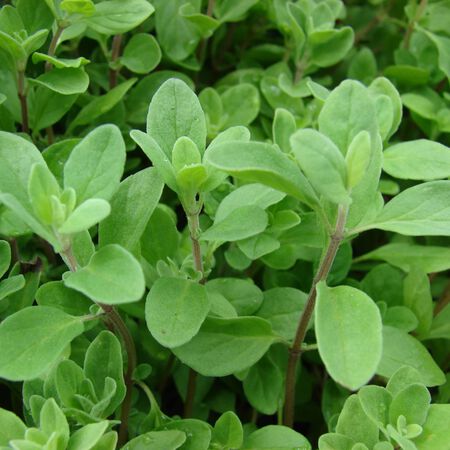Sweet, Marjoram Seed
Key Attributes
Key Attributes
Product Details
Weight
0.008Depth
0.1Height
4.5Width
3.25Plant Height
18-24"Botanical Name
Origanum majoranaSeed Type
SeedSeeds Per Gram
4,411Seeds Per Pound
2,000,000Packet
500 SeedsSow Depth
1/8"Seeds Per Ounce
125,000Breed
Open-pollinatedSun
Full SunLife Cycle
Tender PerennialSow Method
TransplantCategories
HerbGermination
11,12,13,14,7,8,9,10Days To Maturity (# Days)
80Components
Growing Instructions
![]() Learning Download: Instructions for Growing Marjoram
Learning Download: Instructions for Growing Marjoram
Marjoram is an easy herb to grow and grows well in containers as long as the containers are at least 6 inches wide and have a drainage hole at the bottom. Marjoram can be used in many different culinary dishes such as salads and mixed in with vegetables.
Before Planting: Marjoram should be planted outdoors when there is no longer any threat of frost, but it is a slow-growing plant so seeds should be started indoors first. Begin seeds indoors as
early as February.
Planting: Distribute seeds evenly on the surface of wet soil but do not bury them. When transplanting seedlings outside, plant them at least 12 inches apart. Marjoram can grow up to 2 to 3 feet wide.
Watering: Water regularly, but do not over-water. Allow the soil to go almost completely dry between watering.
Fertilizer: Marjoram doesn’t require much fertilizer, but upon transplanting the herb to the garden, a granular plant food can be added to the soil. A slow-release fertilizer can be added to soil prior to planting or compost can be added to the soil as well.
Days to Maturity: Marjoram is ready to harvest just before its flowers are open, generally six weeks after planting and once it is at least 3 feet tall. (See variety for days to harvest)
Harvesting: If marjoram is harvested when its blooms are fully open, there is a bitter taste. Never harvest more than a third of marjoram’s leaves at a time. After harvesting the marjoram, bundle the cuttings and hang them upside down to dry to use as dried herbs.
Tips: Marjoram is good at repelling cabbage moths from the garden and can be planted in between rows of Brassica plants to prevent moths from ruining them. Marjoram also grows well if planted near asparagus and basil.
Shipping Schedule
Our Seed Promise
 "Agriculture and seeds" provide the basis upon which our lives depend. We must protect this foundation as a safe and genetically stable source for future generations. For the benefit of all farmers, gardeners and consumers who want an alternative, we pledge that we do not knowingly buy or sell genetically engineered seeds or plants.
"Agriculture and seeds" provide the basis upon which our lives depend. We must protect this foundation as a safe and genetically stable source for future generations. For the benefit of all farmers, gardeners and consumers who want an alternative, we pledge that we do not knowingly buy or sell genetically engineered seeds or plants.
The mechanical transfer of genetic material outside of natural reproductive methods and between genera, families or kingdoms, poses great biological risks as well as economic, political, and cultural threats. We feel that genetically engineered varieties have been insufficiently tested prior to public release. More research and testing is necessary to further assess the potential risks of genetically engineered seeds. Further, we wish to support agricultural progress that leads to healthier soils, to genetically diverse agricultural ecosystems, and ultimately to healthy people and communities.
To learn more about the "Safe Seed Pledge" please visit www.councilforresponsiblegenetics.org.

